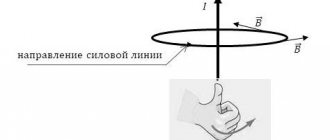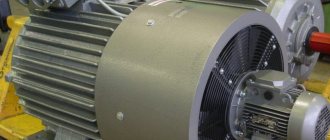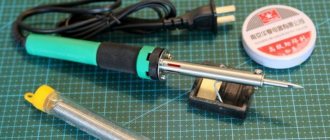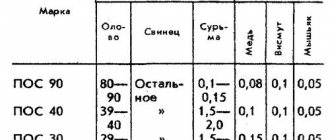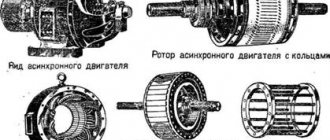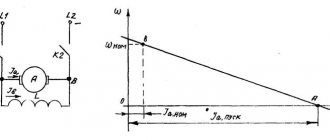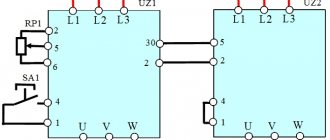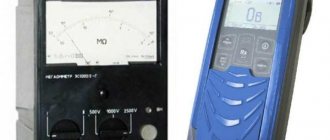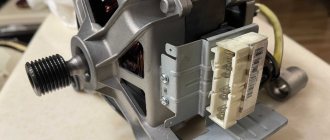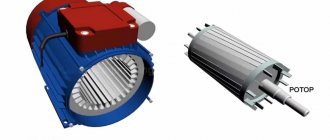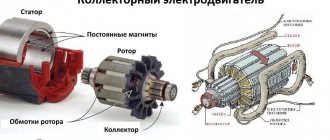An electric motor converts electrical energy into mechanical energy. It consists of a stator (or armature) and a rotor. This device has become very widespread in all spheres of life. Thanks to electric motors, it has been possible to replace human labor with machine work in many areas. Let's look at the different types of motors and find out where electric motors are used (see examples below).
Principle of operation
The electric motor is quite simple. It is based on the principle of electromagnetic induction. The installation includes a stationary part - a stator mounted in AC motors of synchronous and asynchronous types or an inductor (for a DC motor), as well as a rotor, that is, a moving part for synchronous and asynchronous types, or an armature for DC devices.
The rotors can be squirrel-cage (squirrel cage type) and phase with a winding (slip ring system). Cases where the latter type of electric motor is used are asynchronous-type devices for reducing current and regulating rotation speed.
The moving part in a direct current device or working on this principle in a universal motor is called an armature. A universal motor is a DC motor with sequential excitation, that is, sequential connection of the armature and winding. There is no reactance at direct current. Therefore, if you remove the electrical unit from the angle grinder, it will continue to work, especially if the mains voltage is low and the current used is constant.
Electric motor AIR characteristics
| engine's type | R, kW | Rated rotation speed, rpm | efficiency,* | COS f | 1p/1n | Mn/Mn | Mmax/Mn | 1n, A | Weight, kg |
| AIR56A2 | 0,18 | 2840 | 68,0 | 0,78 | 5,0 | 2,2 | 2,2 | 0,52 | 3,4 |
| AIR56V2 | 0,25 | 2840 | 68,0 | 0,698 | 5,0 | 2,2 | 2,2 | 0,52 | 3,9 |
| AIR56A4 | 0,12 | 1390 | 63,0 | 0,66 | 5,0 | 2,1 | 2,2 | 0,44 | 3,4 |
| AIR56V4 | 0,18 | 1390 | 64,0 | 0,68 | 5,0 | 2,1 | 2,2 | 0,65 | 3,9 |
| AIR63A2 | 0,37 | 2840 | 72,0 | 0,86 | 5,0 | 2,2 | 2,2 | 0,91 | 4,7 |
| AIR63V2 | 0,55 | 2840 | 75,0 | 0,85 | 5,0 | 2,2 | 2,3 | 1,31 | 5,5 |
| AIR63A4 | 0,25 | 1390 | 68,0 | 0,67 | 5,0 | 2,1 | 2,2 | 0,83 | 4,7 |
| AIR63V4 | 0,37 | 1390 | 68,0 | 0,7 | 5,0 | 2,1 | 2,2 | 1,18 | 5,6 |
| AIR63A6 | 0,18 | 880 | 56,0 | 0,62 | 4,0 | 1,9 | 2 | 0,79 | 4,6 |
| AIR63V6 | 0,25 | 880 | 59,0 | 0,62 | 4,0 | 1,9 | 2 | 1,04 | 5,4 |
| AIR71A2 | 0,75 | 2840 | 75,0 | 0,83 | 6,1 | 2,2 | 2,3 | 1,77 | 8,7 |
| AIR71V2 | 1,1 | 2840 | 76,2 | 0,84 | 6,9 | 2,2 | 2,3 | 2,6 | 10,5 |
| AIR71A4 | 0,55 | 1390 | 71,0 | 0,75 | 5,2 | 2,4 | 2,3 | 1,57 | 8,4 |
| AIR71V4 | 0,75 | 1390 | 73,0 | 0,76 | 6,0 | 2,3 | 2,3 | 2,05 | 10 |
| AIR71A6 | 0,37 | 880 | 62,0 | 0,70 | 4,7 | 1,9 | 2,0 | 1,3 | 8,4 |
| AIR71V6 | 0,55 | 880 | 65,0 | 0,72 | 4,7 | 1,9 | 2,1 | 1,8 | 10 |
| AIR71A8 | 0,25 | 645 | 54,0 | 0,61 | 4,7 | 1,8 | 1,9 | 1,1 | 9 |
| AIR71V8 | 0,25 | 645 | 54,0 | 0,61 | 4,7 | 1,8 | 1,9 | 1,1 | 9 |
| AIR80A2 | 1,5 | 2850 | 78,5 | 0,84 | 7,0 | 2,2 | 2,3 | 3,46 | 13 |
| AIR80A2ZHU2 | 1,5 | 2850 | 78,5 | 0,84 | 7,0 | 2,2 | 2,3 | 3,46 | 13 |
| AIR80V2 | 2,2 | 2855 | 81,0 | 0,85 | 7,0 | 2,2 | 2,3 | 4,85 | 15 |
| AIR80V2ZHU2 | 2,2 | 2855 | 81,0 | 0,85 | 7,0 | 2,2 | 2,3 | 4,85 | 15 |
| AIR80A4 | 1,1 | 1390 | 76,2 | 0,77 | 6,0 | 2,3 | 2,3 | 2,85 | 14 |
| AIR80V4 | 1,5 | 1400 | 78,5 | 0,78 | 6,0 | 2,3 | 2,3 | 3,72 | 16 |
| AIR80A6 | 0,75 | 905 | 69,0 | 0,72 | 5,3 | 2,0 | 2,1 | 2,3 | 14 |
| AIR80V6 | 1,1 | 905 | 72,0 | 0,73 | 5,5 | 2,0 | 2,1 | 3,2 | 16 |
| AIR80A8 | 0,37 | 675 | 62,0 | 0,61 | 4,0 | 1,8 | 1,9 | 1,49 | 15 |
| AIR80V8 | 0,55 | 680 | 63,0 | 0,61 | 4,0 | 1,8 | 2,0 | 2,17 | 18 |
| AIR90L2 | 3,0 | 2860 | 82,6 | 0,87 | 7,5 | 2,2 | 2,3 | 6,34 | 17 |
| AIR90L2ZHU2 | 3,0 | 2860 | 82,6 | 0,87 | 7,5 | 2,2 | 2,3 | 6,34 | 17 |
| AIR90L4 | 2,2 | 1410 | 80,0 | 0,81 | 7,0 | 2,3 | 2,3 | 5,1 | 17 |
| AIR90L6 | 1,5 | 920 | 76,0 | 0,75 | 5,5 | 2,0 | 2,1 | 4,0 | 18 |
| AIR90LA8 | 0,75 | 680 | 70,0 | 0,67 | 4,0 | 1,8 | 2,0 | 2,43 | 23 |
| AIR90LB8 | 1,1 | 680 | 72,0 | 0,69 | 5,0 | 1,8 | 2,0 | 3,36 | 28 |
| AIR100S2 | 4,0 | 2880 | 84,2 | 0,88 | 7,5 | 2,2 | 2,3 | 8,2 | 20,5 |
| AIR100S2ZHU2 | 4,0 | 2880 | 84,2 | 0,88 | 7,5 | 2,2 | 2,3 | 8,2 | 20,5 |
| AIR100L2 | 5,5 | 2900 | 85,7 | 0,88 | 7,5 | 2,2 | 2,3 | 11,1 | 28 |
| AIR100L2ZHU2 | 5,5 | 2900 | 85,7 | 0,88 | 7,5 | 2,2 | 2,3 | 11,1 | 28 |
| AIR100S4 | 3,0 | 1410 | 82,6 | 0,82 | 7,0 | 2,3 | 2,3 | 6,8 | 21 |
| AIR100L4 | 4,0 | 1435 | 84,2 | 0,82 | 7,0 | 2,3 | 2,3 | 8,8 | 37 |
| AIR100L6 | 2,2 | 935 | 79,0 | 0,76 | 6,5 | 2,0 | 2,1 | 5,6 | 33,5 |
| AIR100L8 | 1,5 | 690 | 74,0 | 0,70 | 5,0 | 1,8 | 2,0 | 4,4 | 33,5 |
| AIR112M2 | 7,5 | 2895 | 87,0 | 0,88 | 7,5 | 2,2 | 2,3 | 14,9 | 49 |
| AIR112M2ZHU2 | 7,5 | 2895 | 87,0 | 0,88 | 7,5 | 2,2 | 2,3 | 14,9 | 49 |
| AIR112M4 | 5,5 | 1440 | 85,7 | 0,83 | 7,0 | 2,3 | 2,3 | 11,7 | 45 |
| AIR112MA6 | 3,0 | 960 | 81,0 | 0,73 | 6,5 | 2,1 | 2,1 | 7,4 | 41 |
| AIR112MB6 | 4,0 | 860 | 82,0 | 0,76 | 6,5 | 2,1 | 2,1 | 9,75 | 50 |
| AIR112MA8 | 2,2 | 710 | 79,0 | 0,71 | 6,0 | 1,8 | 2,0 | 6,0 | 46 |
| AIR112MB8 | 3,0 | 710 | 80,0 | 0,73 | 6,0 | 1,8 | 2,0 | 7,8 | 53 |
| AIR132M2 | 11 | 2900 | 88,4 | 0,89 | 7,5 | 2,2 | 2,3 | 21,2 | 54 |
| AIR132M2ZHU2 | 11 | 2900 | 88,4 | 0,89 | 7,5 | 2,2 | 2,3 | 21,2 | 54 |
| AIR132S4 | 7,5 | 1460 | 87,0 | 0,84 | 7,0 | 2,3 | 2,3 | 15,6 | 52 |
| AIR132M4 | 11 | 1450 | 88,4 | 0,84 | 7,0 | 2,2 | 2,3 | 22,5 | 60 |
| AIR132S6 | 5,5 | 960 | 84,0 | 0,77 | 6,5 | 2,1 | 2,1 | 12,9 | 56 |
| AIR132M6 | 7,5 | 970 | 86,0 | 0,77 | 6,5 | 2,0 | 2,1 | 17,2 | 61 |
| AIR132S8 | 4,0 | 720 | 81,0 | 0,73 | 6,0 | 1,9 | 2,0 | 10,3 | 70 |
| AIR132M8 | 5,5 | 720 | 83,0 | 0,74 | 6,0 | 1,9 | 2,0 | 13,6 | 86 |
| AIR160S2 | 15 | 2930 | 89,4 | 0,89 | 7,5 | 2,2 | 2,3 | 28,6 | 116 |
| AIR160S2ZHU2 | 15 | 2930 | 89,4 | 0,89 | 7,5 | 2,2 | 2,3 | 28,6 | 116 |
| AIR160M2 | 18,5 | 2930 | 90,0 | 0,90 | 7,5 | 2,0 | 2,3 | 34,7 | 130 |
| AIR160M2ZHU2 | 18,5 | 2930 | 90,0 | 0,90 | 7,5 | 2,0 | 2,3 | 34,7 | 130 |
| AIR160S4 | 15 | 1460 | 89,4 | 0,85 | 7,5 | 2,2 | 2,3 | 30,0 | 125 |
| AIR160S4ZHU2 | 15 | 1460 | 89,4 | 0,85 | 7,5 | 2,2 | 2,3 | 30,0 | 125 |
| AIR160M4 | 18,5 | 1470 | 90,0 | 0,86 | 7,5 | 2,2 | 2,3 | 36,3 | 142 |
| AIR160S6 | 11 | 970 | 87,5 | 0,78 | 6,5 | 2,0 | 2,1 | 24,5 | 125 |
| AIR160M6 | 15 | 970 | 89,0 | 0,81 | 7,0 | 2,0 | 2,1 | 31,6 | 155 |
| AIR160S8 | 7,5 | 720 | 85,5 | 0,75 | 6,0 | 1,9 | 2,0 | 17,8 | 125 |
| AIR160M8 | 11 | 730 | 87,5 | 0,75 | 6,5 | 2,0 | 2,0 | 25,5 | 150 |
| AIR180S2 | 22 | 2940 | 90,5 | 0,90 | 7,5 | 2,0 | 2,3 | 41,0 | 150 |
| AIR180S2ZHU2 | 22 | 2940 | 90,5 | 0,90 | 7,5 | 2,0 | 2,3 | 41,0 | 150 |
| AIR180M2 | 30 | 2950 | 91,4 | 0,90 | 7,5 | 2,0 | 2,3 | 55,4 | 170 |
| AIR180M2ZHU2 | 30 | 2950 | 91,4 | 0,90 | 7,5 | 2,0 | 2,3 | 55,4 | 170 |
| AIR180S4 | 22 | 1470 | 90,5 | 0,86 | 7,5 | 2,2 | 2,3 | 43,2 | 160 |
| AIR180S4ZHU2 | 22 | 1470 | 90,5 | 0,86 | 7,5 | 2,2 | 2,3 | 43,2 | 160 |
| AIR180M4 | 30 | 1470 | 91,4 | 0,86 | 7,2 | 2,2 | 2,3 | 57,6 | 190 |
| AIR180M4ZHU2 | 30 | 1470 | 91,4 | 0,86 | 7,2 | 2,2 | 2,3 | 57,6 | 190 |
| AIR180M6 | 18,5 | 980 | 90,0 | 0,81 | 7,0 | 2,1 | 2,1 | 38,6 | 160 |
| AIR180M8 | 15 | 730 | 88,0 | 0,76 | 6,6 | 2,0 | 2,0 | 34,1 | 172 |
| AIR200M2 | 37 | 2950 | 92,0 | 0,88 | 7,5 | 2,0 | 2,3 | 67,9 | 230 |
| AIR200M2ZHU2 | 37 | 2950 | 92,0 | 0,88 | 7,5 | 2,0 | 2,3 | 67,9 | 230 |
| AIR200L2 | 45 | 2960 | 92,5 | 0,90 | 7,5 | 2,0 | 2,3 | 82,1 | 255 |
| AIR200L2ZHU2 | 45 | 2960 | 92,5 | 0,90 | 7,5 | 2,0 | 2,3 | 82,1 | 255 |
| AIR200M4 | 37 | 1475 | 92,0 | 0,87 | 7,2 | 2,2 | 2,3 | 70,2 | 230 |
| AIR200L4 | 45 | 1475 | 92,5 | 0,87 | 7,2 | 2,2 | 2,3 | 84,9 | 260 |
| AIR200M6 | 22 | 980 | 90,0 | 0,83 | 7,0 | 2,0 | 2,1 | 44,7 | 195 |
| AIR200L6 | 30 | 980 | 91,5 | 0,84 | 7,0 | 2,0 | 2,1 | 59,3 | 225 |
| AIR200M8 | 18,5 | 730 | 90,0 | 0,76 | 6,6 | 1,9 | 2,0 | 41,1 | 210 |
| AIR200L8 | 22 | 730 | 90,5 | 0,78 | 6,6 | 1,9 | 2,0 | 48,9 | 225 |
| AIR225M2 | 55 | 2970 | 93,0 | 0,90 | 7,5 | 2,0 | 2,3 | 100 | 320 |
| AIR225M4 | 55 | 1480 | 93,0 | 0,87 | 7,2 | 2,2 | 2,3 | 103 | 325 |
| AIR225M6 | 37 | 980 | 92,0 | 0,86 | 7,0 | 2,1 | 2,1 | 71,0 | 360 |
| AIR225M8 | 30 | 735 | 91,0 | 0,79 | 6,5 | 1,9 | 2,0 | 63 | 360 |
| AIR250S2 | 75 | 2975 | 93,6 | 0,90 | 7,0 | 2,0 | 2,3 | 135 | 450 |
| AIR250M2 | 90 | 2975 | 93,9 | 0,91 | 7,1 | 2,0 | 2,3 | 160 | 530 |
| AIR250S4 | 75 | 1480 | 93,6 | 0,88 | 6,8 | 2,2 | 2,3 | 138,3 | 450 |
| AIR250M4 | 90 | 1480 | 93,9 | 0,88 | 6,8 | 2,2 | 2,3 | 165,5 | 495 |
| AIR250S6 | 45 | 980 | 92,5 | 0,86 | 7,0 | 2,1 | 2,0 | 86,0 | 465 |
| AIR250M6 | 55 | 980 | 92,8 | 0,86 | 7,0 | 2,1 | 2,0 | 104 | 520 |
| AIR250S8 | 37 | 740 | 91,5 | 0,79 | 6,6 | 1,9 | 2,0 | 78 | 465 |
| AIR250M8 | 45 | 740 | 92,0 | 0,79 | 6,6 | 1,9 | 2,0 | 94 | 520 |
| AIR280S2 | 110 | 2975 | 94,0 | 0,91 | 7,1 | 1,8 | 2,2 | 195 | 650 |
| AIR280M2 | 132 | 2975 | 94,5 | 0,91 | 7,1 | 1,8 | 2,2 | 233 | 700 |
| AIR280S4 | 110 | 1480 | 94,5 | 0,88 | 6,9 | 2,1 | 2,2 | 201 | 650 |
| AIR280M4 | 132 | 1480 | 94,8 | 0,88 | 6,9 | 2,1 | 2,2 | 240 | 700 |
| AIR280S6 | 75 | 985 | 93,5 | 0,86 | 6,7 | 2,0 | 2,0 | 142 | 690 |
| AIR280M6 | 90 | 985 | 93,8 | 0,86 | 6,7 | 2,0 | 2,0 | 169 | 800 |
| AIR280S8 | 55 | 740 | 92,8 | 0,81 | 6,6 | 1,8 | 2,0 | 111 | 690 |
| AIR280M8 | 75 | 740 | 93,5 | 0,81 | 6,2 | 1,8 | 2,0 | 150 | 800 |
| AIR315S2 | 160 | 2975 | 94,6 | 0,92 | 7,1 | 1,8 | 2,2 | 279 | 1170 |
| AIR315M2 | 200 | 2975 | 94,8 | 0,92 | 7,1 | 1,8 | 2,2 | 248 | 1460 |
| AIR315MV2 | 250 | 2975 | 94,8 | 0,92 | 7,1 | 1,8 | 2,2 | 248 | 1460 |
| AIR315S4 | 160 | 1480 | 94,9 | 0,89 | 6,9 | 2,1 | 2,2 | 288 | 1000 |
| AIR315M4 | 200 | 1480 | 94,9 | 0,89 | 6,9 | 2,1 | 2,2 | 360 | 1200 |
| AIR315S6 | 110 | 985 | 94,0 | 0,86 | 6,7 | 2,0 | 2,0 | 207 | 880 |
| AIR315M(A)6 | 132 | 985 | 94,2 | 0,87 | 6,7 | 2,0 | 2,0 | 245 | 1050 |
| AIR315MV6 | 160 | 985 | 94,2 | 0,87 | 6,7 | 2,0 | 2,0 | 300 | 1200 |
| AIR315S8 | 90 | 740 | 93,8 | 0,82 | 6,4 | 1,8 | 2,0 | 178 | 880 |
| AIR315M(A)8 | 110 | 740 | 94,0 | 0,82 | 6,4 | 1,8 | 2,0 | 217 | 1050 |
| AIR315MV8 | 132 | 740 | 94,0 | 0,82 | 6,4 | 1,8 | 2,0 | 260 | 1200 |
| AIR355S2 | 250 | 2980 | 95,5 | 0,92 | 6,5 | 1.6 | 2,3 | 432,3 | 1700 |
| AIR355M2 | 315 | 2980 | 95,6 | 0,92 | 7,1 | 1,6 | 2,2 | 544 | 1790 |
| AIR355S4 | 250 | 1490 | 95,6 | 0,90 | 6,2 | 1,9 | 2,9 | 441 | 1700 |
| AIR355M4 | 315 | 1480 | 95,6 | 0,90 | 6,9 | 2,1 | 2,2 | 556 | 1860 |
| AIR355MA6 | 200 | 990 | 94,5 | 0,88 | 6,7 | 1,9 | 2,0 | 292 | 1550 |
| AIR355S6 | 160 | 990 | 95,1 | 0,88 | 6,3 | 1,6 | 2,8 | 291 | 1550 |
| AIR355MV6 | 250 | 990 | 94,9 | 0,88 | 6,7 | 1,9 | 2,0 | 454,8 | 1934 |
| AIR355L6 | 315 | 990 | 94,5 | 0,88 | 6,7 | 1,9 | 2,0 | 457 | 1700 |
| AIR355S8 | 132 | 740 | 94,3 | 0,82 | 6,4 | 1,9 | 2,7 | 259,4 | 1800 |
| AIR355MA8 | 160 | 740 | 93,7 | 0,82 | 6,4 | 1,8 | 2,0 | 261 | 2000 |
| AIR355MV8 | 200 | 740 | 94,2 | 0,82 | 6,4 | 1,8 | 2,0 | 315 | 2150 |
| AIR355L8 | 132 | 740 | 94,5 | 0,82 | 6,4 | 1,8 | 2,0 | 387 | 2250 |
AC motors
The devices in question come in AC and DC power. In all areas where an electric motor is used, it most often has alternating current. This motor has a simple operating principle and is easy to operate. The only significant disadvantage is the unregulated rotation speed.
AC electric motors can have one or more phases. Devices that use an AC electric motor are those machines that do not need to regulate the speed. They can have different purposes (crushers, pumps, wood processing machines, and so on). Their power ranges from two tenths to two hundred kilowatts or more.
Housing protection degree
To symbolize the degree of protection of the body of an electrical machine from harmful environmental factors, the abbreviation IP is used. In this case, the following information is indicated on the electric drive housing:
- High level of dust protection - IP65, IP66.
- Protected - not lower than IP21, IP22.
- With moisture protection - IP55, IP5.
- With protection against splashes and drops - IP23, IP24.
- Closed version - IP44 - IP54.
- Sealed - IP67, IP68.
When selecting an electric motor for operation under conditions of exposure to certain harmful factors, it is necessary to carefully select the degree of protection of its housing.
DC motors
Electric DC motors can have, in addition to series, parallel and mixed connections of stator and armature windings. Their advantage is something that is not available to the previous type: the ability to regulate the speed of rotation. However, during operation the use of force is necessary.
Such motors are either brushless or commutated.
Brushless, or valve-type, motors are motors that operate in a closed system with a sensor that determines the rotor position and control system.
Commutator motors can be self-excited (parallel, series and mixed) and independently excited.
Devices where DC electric motors are used are, for example, electric vehicles and various construction machines.
General safety requirements for installation and operation
When installing an electric motor, the following requirements must be adhered to:
- Before connecting, check that the frequency and voltage of the supply network corresponds with the information on the electric motor data sheet.
- Before installing an electrical machine, be sure to measure the electrical insulation resistance of the stator winding relative to the housing. If the values are unsatisfactory, the insulation is dried until the required value is reached.
- When mating shafts, it is necessary to strictly maintain alignment with a permissible deviation of no more than 0.2 mm.
- To ground the electric motor housing, use only special grounding devices provided for in the manufacturer’s instructions.
- Installation of an electric drive under voltage is strictly prohibited.
When operating electrical machines, the following basic rules should be adhered to:
- Regular inspection of the condition of the electric motor is the key to timely identification of faults.
- Regularly throughout the entire service life, the serviceability of current and thermal protection, cleaning and lubrication, check of contact connections and reliability of grounding are carried out.
- If there is increased noise or knocking, vibration diagnostics are carried out to determine the condition of bearings and other rotating parts.
- Prolonged operation of a single-phase electric motor in idle mode should be avoided, which negatively affects its service life.
- It is prohibited to operate an electric motor with faulty protection against overheating, overload, or an excessive value of the ground loop resistance.
Asynchronous view
The most commonly used is a three-phase squirrel-cage asynchronous motor. In this case, a circular magnetic field penetrates the short-circuited rotor winding, causing an induction current to occur. It is called asynchronous because the rotation of the rotor is not equal to the rotation of the magnetic stator.
The use of asynchronous electric motors is common in many branches of technology, in household appliances (refrigerators, washing machines, air conditioners), in industry, for example, in wood and metalworking, as well as in weaving. They work more stable than other types, are cheaper and easier to operate.
Energy efficiency
The concept of energy efficiency refers to the ratio of the cost of paying for electricity used to power the engines and useful work. According to the IEC60034-30-1 standard, all motors are divided into classes:
- IE1 – standard;
- IE2 – high efficiency;
- IE3 – extra high;
- IE4 – premium.
When choosing an engine, it is also necessary to take into account the cost of the equipment and the payback period. It is not always profitable to buy IE4 motors if they are turned on for several hours a day, or even a week. But it is also impractical to buy cheap IE1 motors for production lines that operate almost 24/7. There must be balance in everything.
Types of torque generation
Based on how the torque appears, electric motors are divided into hysteresis and magnetoelectric.
The most common use in traditional industries is the use of magnetoelectric motors. They can be both direct and alternating current. There are also universal engines.
But the industries where hysteresis electric motors are used cannot be called widespread. Typically, such devices are unconventional and are used extremely rarely in industry. More of them are used in gyroscopy, time counters, as well as in sound and image recording devices.
Climatic performance
The prevalence of electric drives determines their operation in a variety of conditions, including quite harsh ones. The tightness of the housing, cooling efficiency, and manufacturing materials determine the possibility of installing the motor in certain conditions. There are 7 such executions:
- U1 - outdoor operation in areas with a temperate climate;
- U2 - installation under a canopy, or indoors in temperate climates;
- U3 - installation in a ventilated room;
- T 1 (2, 3) - for dry and humid tropical climates (1, 2 and 3 - open air, canopy and indoors);
- UHL1 - moderately cold climate with outdoor installation;
- UHL 4 - moderately cold climate with indoor installation;
- UT1.5 - Universal.
Universal commutator-type motors
Where are universal commutator type electric motors used? Without them, industrial and household appliances do not function, for example, fans, juicers, meat grinders, vacuum cleaners, refrigerators and the like. They operate from a direct current network of one hundred ten and two hundred twenty volts, and from an alternating current network of 127 and 220 volts.
The design of such motors is similar to bipolar DC motors with series excitation.
Here, not only the armature is assembled from sheet-type electrical steel, but also the pole and the yoke, that is, the stationary part of the magnetic wire.
The field winding can be connected to either one or the other side of the armature. This reduces radio interference generated by the motor. The same rotation speed for both direct and alternating current is achieved by implementing an excitation winding with branches. The only difference is that with a direct current network it is used completely, and with an alternating current network it is only partially used.
The torque is obtained through the interaction of the current with the magnetic excitation flux.
Such motors have a power of only five to six hundred watts (but in some cases, for example, in electric tools, they reach eight hundred watts), and a rotation speed of two thousand seven hundred seventy to eight thousand revolutions per minute. Since the starting currents here are small, starting resistances are not needed. The minimum number of pins on universal collectors is four. Of these, two are used for connecting to a DC network, and the other two are for AC. Moreover, in the latter case, the engine efficiency will be lower due to large electrical and magnetic losses. Alternating current will be consumed more than direct current, since it has not only an active component, but also a reactive one.
The rotation speed can be controlled, for example, by an automatic transformer or a rheostat.
Rated reactive electrical power
The power that is returned to the electrical network is called reactive power. It is calculated as the square root of the difference between the squares of the total and active electrical powers. In our example, it is equal to 2750 VAR (volt-ampere reactive).
The mechanical characteristics of electric motors are also important when choosing and purchasing a device. Let's look at the rules by which they are calculated.
Repair
Repair work on the entire device is carried out in order to restore its functionality and performance. Sometimes some parts need to be replaced. For example, when the stator heats up for various reasons, carbon deposits may form on the armature structure of the electric motor.
The sequence of steps is then as follows:
- engine dismantling;
- cleaning work;
- disassembly of all components;
- restoration of damaged parts;
- painting;
- assembling the engine and testing it under load conditions.
If the rod has cracks, it must be restored or replaced. This is done like this: at the site of the crack, an incision is made and holes are drilled from the point of this incision to the end of the closing ring. The part that was drilled is filled with copper alloy.
Do not forget about checking the engine for open circuits and short circuits. The rotor and stator resistance are checked using an ohmmeter, while checking the technical specifications in the operating instructions. However, the device must be extremely sensitive due to the tendency of resistance to zero in the windings of powerful motor models.
Angular velocity
The next important characteristic of an asynchronous electric motor is angular velocity. In order to calculate it, you first need to convert the rotor speed to other units of measurement. First, let's calculate the number of revolutions per second: 2800 / 60 = 46.7.
Next, you need to multiply the resulting number by 2 Pi: 46.7 * 2 * 3.14 = 293.276 radians per second. The resulting value characterizes the angular velocity of the electric motor. Sometimes, for ease of calculation, angular velocity is converted to degrees. We get: 46.7 * 360 = 16812 degrees per second.
Electric motors: design and principle of operationApplication of electric motors
- Electric motor rotor - design features and operating principle of the device. Repair and restoration instructions
